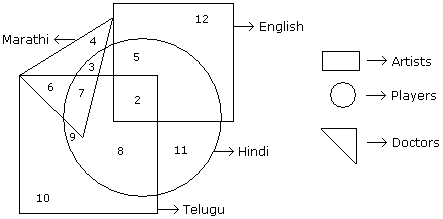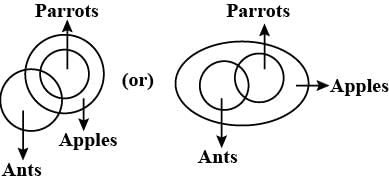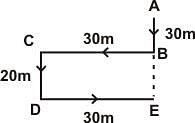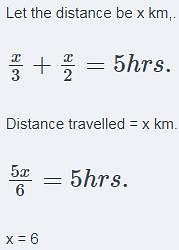DSSSB TGT Social Science Mock Test - 4 - DSSSB TGT/PGT/PRT MCQ
30 Questions MCQ Test - DSSSB TGT Social Science Mock Test - 4
Which of the following utility approach is based on the theory of Alfred Marshall?
Look at this series: 4, 11, 19, 41, ?, 161...so on. What number should come?
| 1 Crore+ students have signed up on EduRev. Have you? Download the App |
Statements:
Some ants are parrots.
All the parrots are apples.
Conclusions:
1. All the apples are parrots.
2. Some ants are apples.
Some ants are parrots.
All the parrots are apples.
1. All the apples are parrots.
2. Some ants are apples.
If in a code language PAINT is written as 74128 and EXCEL as 93596, then how ACCEPT will be written in that language?
Directions : In each question below are given two Statements: followed by two conclusion numbered I and II. You have to take the two given statement to be true even if they seem to be at variance with commonly known facts and then decide which of the given Conclusions: logically follows from the two given statement, disregarding commonly know facts.
Statements:
All radios are electric goods.
All table lamps are electric goods.
Conclusions:
I. Some radios are table-lamps.
II. Some tables-lamps are radios.
Directions to Solve
In each of the following questions find out the alternative which will replace the question mark.
Question -
REASON : SFBTPO :: THINK : ?
Directions to Solve
In each of the following questions find out the alternative which will replace the question mark.
Question -
3 : 12 :: 5 : ?
Directions to Solve
In the following figure small square represents the persons who know English, triangle to those who know Marathi, big square to those who know Telugu and circle to those who know Hindi. In the different regions of the figures from 1 to 12 are given.

Question -
How many persons can speak English and Hindi both the languages only ?
A man walks 30 metres towards South. Then, turning to his right, he walks 30 metres. Then, turning to his left, he walks 20 metres. Again, he turns to his left and walks 30 metres. How far is he from his initial position?
Starting from a point P, Sachin walked 20 metres towards South. He turned left and walked 30 metres. He then turned left and walked 20 metres. He again turned left and walked 40 metres and reached a point Q. How far and in which direction is the point Q from the point P?
If in a code language, COULD is written as BNTKC and MARGIN is written as LZQFHM, how will MOULDING be written in that code?
A sum of Rs. 14,000 amounts to Rs. 22,400 in 12 years at the rate of simple interest. What is the rate of interest?
The price of raw materials has gone up by 15%, labour cost has also increased from 25% of the cost of raw material to 30% of the cost of raw material. By how much percentage should there be a reduction in the usage of raw materials so as to keep the cost the same?
Simple interest on a certain sum of money for 4 years at 5% per annum is half the compound interest on Rs. 3000 for 2 years at 10% per annum. The sum placed on simple interest is:
The salaries A, B, C are in the ratio 2 : 3 : 5. If the increments of 15%, 10% and 20% are allowed respectively in their salaries, then what will be new ratio of their salaries?
A boy goes to school with a speed of 3 km/hr and returns to the village with a speed of 2 km/hr. If he takes 5 hours in all, the distance between the village and the school is
72 men can build a wall 280 m long in 21 days. How many men will take 18 days to build a similar type of a wall of length 100 m.
The marked price of a pen is Rs. 60. After allowing a discount of 10% the merchant makes a profit of 20% what is the cost price of the pen.
Study the following graph carefully to answer the given questions
Time taken by the pipes to fill a tank/cistern (hours/minutes)
Two pipes, A and B are opened simultaneously and it is found that due to the leakage in the bottom, 17/7 minutes are taken extra to fill the tank. If the tank is full, in what approximate time would the leak empty it?
Study the following graph carefully to answer the given questions
Down Stream Distance = 200 km Up Stream Distance = 300 km
A boatman rows down stream at 6kmph on Wednesday. Find the speed of upstream and Speed of current?
(Q.no: 11-15). Refer to the following Line Graph and answer the given questions.
What is the respective ratio of total number of students who appeared for the exam in the years 2014 and 2015 together and the total number of students who could pass the exam in the same years together?
When a shopkeeper reduces the selling price of an article from 1180 to 1126 his loss increases by 5% . What is the cost price of article?
A truck travelled to a place Q from P, the first 50 km at 10 kmph faster than the usual speed, but it returned the same distance at 10 kmph slower than usual speed. If the total time taken by the truck is 12 hours, then how many hours will travel at the faster speed?
A piece of work has to be completed in 50 days, a number of men are employed but it is found that only half of the work is done in 30 days, then an additional 20 men were joined to complete the work on time. How many men initially put to work?
The least number, which when divided by 12, 15, 20 and 54 leaves in each case a remainder of 8 is:
Ravi got 70% in English and 56% in Biology and the maximum marks of both papers is 100. What percent does he score in Maths, if he scores 60% marks in all the three subjects?. Maximum Marks of Maths paper is 200.
Sonam calculates average of 10 positive 2 digit integers. By mistake she interchanges the digits of one number while calculating the average. Because of which, the average becomes 2.7 less than the correct answer. What is the difference between the two digits of the number which was reversed while calculating the average?























